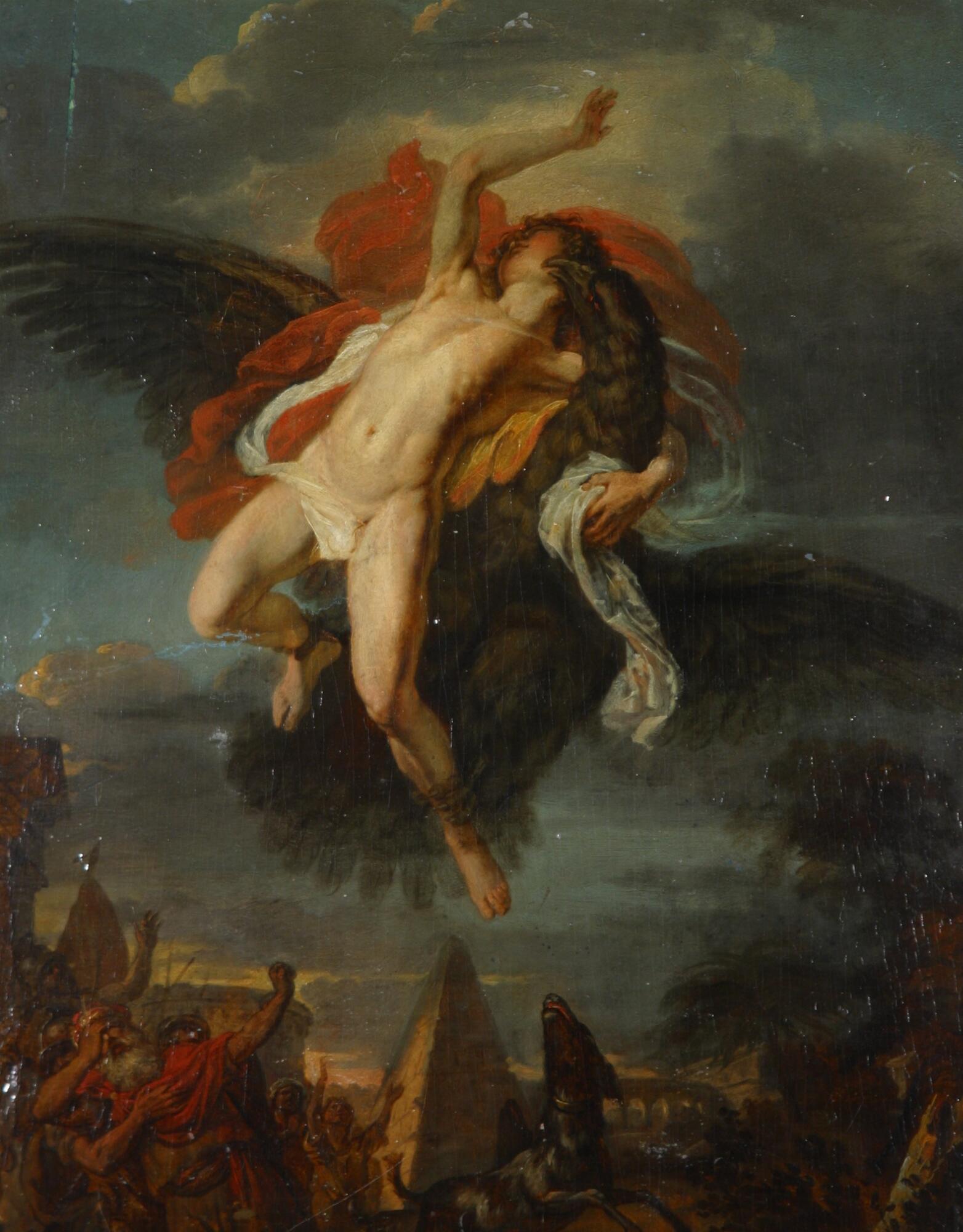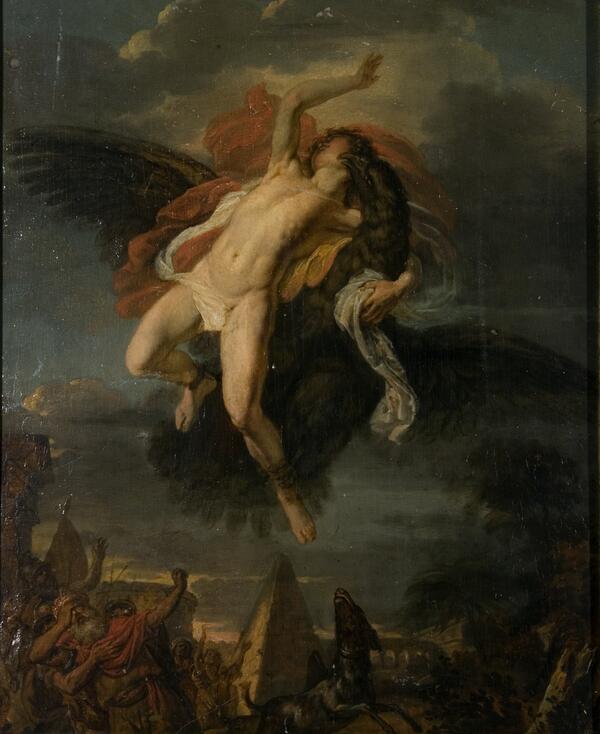The painting entered the Murom Museum in 1918 as part of the collection of the Counts Uvarov. Its author Andrey Ivanov (1775-1848) is a Russian artist, a representative of classicism and a master of historical painting. His main works are devoted to historical themes, icons for St. Petersburg cathedrals and Orthodox churches located outside the Fatherland. There is no information about the painter origin, since the future artist spent his first years in Educational home in Moscow. In 1782, the Board of Guardians sent him to the St. Petersburg Academy of Arts. Ivanov graduated from this educational institution with a gold medal, and then for 30 years taught in the plein-air and historical classes of the Academy. Among the master’s students was the famous Russian painter Karl Bryullov. Today, few people know about Andrei Ivanov, but the name of his son, the talented painter Alexander Ivanov, is known all over the world.
The painting “The Abduction of Ganymede” was painted in 1800, and its plot was the myth of the abduction of the son of the Troy ruler Tros by the king of the gods Zeus Ganymede. Since childhood, this young man was famous for his unearthly beauty, which did not hide from the lord of the gods Zeus. Wanting at all costs to get this handsome man to Olympus, the ruler of the celestials turned into a giant eagle and took the unfortunate young man with him. Ganymede was granted eternal youth in the halls of Zeus. According to the poets, at Olympus he became a cupbearer at the feasts of the gods and replaced Hebe, the daughter of Zeus and Hera. The ruler of Olympus did not forget the inconsolable father of the young man he kidnapped. So, Hermes, the son of the thunderer, visited Tros and presented him a golden vine made by Hephaestus and two beautiful horses. In addition, the messenger of the gods convinced the king that from now his son becomes immortal, he will not be affected by the hardships of old age. In the years when the painting was painted, ancient Greek mythology was quite popular among Russian artists. The story of the abduction of Ganymede was repeatedly addressed by the great painters of the past: Rembrandt, Rubens and other famous European artists.
The painting “The Abduction of Ganymede” was painted in 1800, and its plot was the myth of the abduction of the son of the Troy ruler Tros by the king of the gods Zeus Ganymede. Since childhood, this young man was famous for his unearthly beauty, which did not hide from the lord of the gods Zeus. Wanting at all costs to get this handsome man to Olympus, the ruler of the celestials turned into a giant eagle and took the unfortunate young man with him. Ganymede was granted eternal youth in the halls of Zeus. According to the poets, at Olympus he became a cupbearer at the feasts of the gods and replaced Hebe, the daughter of Zeus and Hera. The ruler of Olympus did not forget the inconsolable father of the young man he kidnapped. So, Hermes, the son of the thunderer, visited Tros and presented him a golden vine made by Hephaestus and two beautiful horses. In addition, the messenger of the gods convinced the king that from now his son becomes immortal, he will not be affected by the hardships of old age. In the years when the painting was painted, ancient Greek mythology was quite popular among Russian artists. The story of the abduction of Ganymede was repeatedly addressed by the great painters of the past: Rembrandt, Rubens and other famous European artists.



